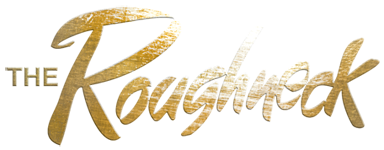In Calgary’s corporate headquarters, it had been long been acknowledged, very quietly of course, that Saskatchewan’s energy regulator is “a bit lax” in how it policed the oilpatch. Executives believed they could get away with more. Sadly, last fall a consortium of media claimed it had uncovered almost five years of violations in how industry handles hydrogen sulphide (H2S). Worse, these breaches occurred under the watch of provincial regulatory officials who were allegedly aware there was a problem.
It had been a year-long joint investigation – many in the oilpatch would call a drive-by smear — by the National Observer, the Toronto Star, Global News, and four journalism schools (Universities of Concordia, Regina, Ryerson, and British Columbia) funded by The Michener Awards Foundation and the Corporate Mapping Project (backed by fossil-fuel opponent think tanks — the Canadian Centre for Policy Alternatives and the Parkland Institute) – to reveal this to the public.
“The Government of Saskatchewan has failed to regulate the oil industry in the public interest, resulting in egregious impacts on public health and the environment,” the consortium reported in a communique. “Instead of properly monitoring and enforcing its own regulations, the government has instead invested its time and resources in defending the industry at all costs.”
The group is calling for the government to “end the secrecy and cover-ups that pervade its regulation of the oil industry.”
According to Doug MacKnight, assistant deputy minister with the Ministry of the Economy (where the regulator is housed), the government has been proactive in its response. “This issue had its roots in 2012 when there was an increase in odour complaints. We documented five complaints where H2S was an issue. Unfortunately, that included one workplace fatality. Offending companies involved several large operators as well as a couple small ones.”
H2S Frightening to Public
Sour gas is always scary to the public. They generally know that H2S is a corrosive, invisible gas that can leak from drilling rigs, wellheads, tanks, flare stacks, and oilfield equipment. They also realize it is fatal to humans and animals in high concentrations.
The media consortium asserted it had discovered several people who were sickened by H2S, and in 2014, a worker died on the job by inhaling it. “There is no evidence the provincial government issued public safety warnings following these incidents, and internal records obtained through access to information legislation show that it declined twice to make public the H2S danger zones it had identified with data from industry.”
The activists know H2S is lethal and they pounced. “It is clear to anyone who cares to listen to these stories that people are suffering in rural Saskatchewan. Instead of acting on these serious infractions, the government has covered them up and denied there is a problem,” they added.
It was the media consortium who leveled the most serious charge. “It is those living and working in the oilpatch who have been most impacted by the serious infractions of an industry that is virtually unregulated and has emitted noxious gasses, like H2S, which has poisoned people in their backyards. Yet these same people are afraid to voice their grievances for fear of chasing away the industry they rely on.”
Government Response + Follow-up

Our Favourite Premier Brad Wall Tweet: “Yes…I was blinded by pixie dust and gored by the unicorn.” June 5, 2016. At the time, he was sparring with the Trudeau government over carbon pricing and he was attacking those trying to usher in a non-fossil fuel economy.
When the story broke, then Premier Brad Wall was in Washington, D.C. advocating for cross-border pipelines. His government issued a statement. “Public health and safety is our number one priority.”
Then Saskatchewan Economy Minister Nancy Heppner sent a letter defending the province’s actions. “There has been a marked improvement in air quality in southeast Saskatchewan in terms of sour gas levels,” she wrote. She did acknowledge, however, that in 2014 her department had debated a tough new penalty regime for companies that broke the rules. Cabinet ultimately rejected tightening the regulations.
The politicians understood the public was alarmed and needed to do something. Later that year it introduced a cost-recovery levy, tied to oil and gaswells, that would fund increased regulatory programming, purchased new equipment (including new air monitoring stations, hand-held sour gas measurement devices [capable of measuring parts-per-billion], and infrared cameras to identify leaks and venting emissions), hired more field staff, developed IRIS (integrated resource information system) to track field data, and boosted technical training to better understand gas composition data and perform better field inspections. Today, the levy includes pipelines.
MacKnight says the ministry worked with the Southeast Saskatchewan Airshed Association (SESAA) which monitors 36,800 square kms and includes 45 municipalities in the region. This non-partisan group tracks and publishes emission levels – nitrate oxide, nitrogen dioxide, carbon monoxide, H2S, and sulphur dioxide — and is supported by agriculture, oil and gas, power generation, mining, and transportation.
“These monitors have resulted in remarkable progress,” MacKnight says. “Gas flaring is down by 70 per cent and gas conservation is up because the companies tied in more wells and built another pipeline. Industry has invested a lot of money to rebuild the public’s support. Since November 2015 there have been no major incidents, although we occasionally get a few ambient air-quality odour complaints.”
The cost recovery levy added $4.5 MM to the regulators’ budget and enabled the ministry to pay for its equipment, IRIS system, and technical training, adds MacKnight. The government has stepped-up wellsite and facilities inspections, especially targeting those handling high volumes of H2S. The latest budget also allocated $1.35 MM for regulatory programs between 2017-2018.
#Saskatchewan #BradWall #Politics #Oilandgas, #TheRoughneck #Roughneck #OilIndustry #Wellsite #Pipelines #H2S, #Safety #OilSafety #PublicSafety #Canada






